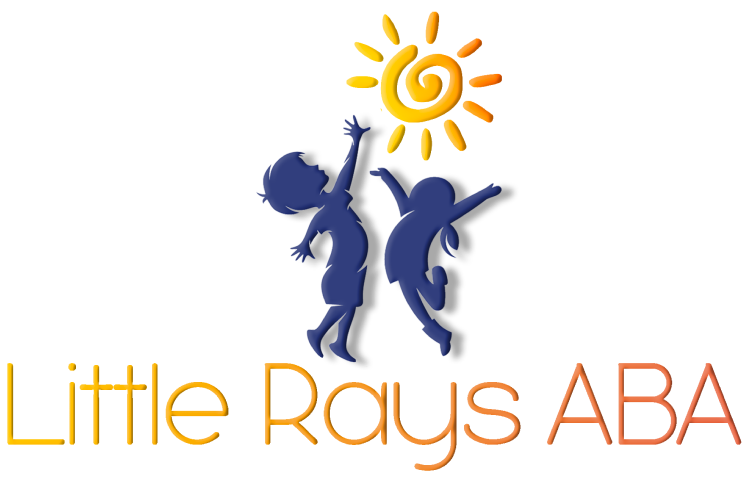ABA therapy, or Applied Behavior Analysis, often focuses on building important communication skills. A key component of this is "tacting," a specific type of verbal behavior. Essentially, tacting is the ability to name or label things in the environment. This blog post will explore the concept of tacting, its significance in language development, and its role within ABA therapy.
Understanding Tacting in ABA Therapy
Imagine a child excitedly pointing at a dog and saying, "Dog!" This, in simple terms, is tacting. It's the ability to label or describe objects, actions, feelings, and other aspects of the environment. Tacting goes beyond simply naming things; it reflects an understanding of the connection between a word and its meaning.
Within ABA therapy, tacting is vital for building communication skills in individuals with autism spectrum disorder. It forms the foundation for more complex language skills and paves the way for richer social interactions.
Defining Tacting and Its Place in ABA
Tacting, an ABA term central to language development, refers to the verbal response an individual gives when they encounter something in their environment. It's different from other verbal behaviors like manding (requesting) because it's not driven by a want or need. Instead, it's a spontaneous response to sensory input.
The beauty of tacting lies in its ability to connect a person's internal experience to the external world. For example, a child feeling hot might tact by saying, "Hot!" This showcases their ability to identify and communicate their internal state.
Within ABA therapy, tacting is systematically taught and reinforced. Therapists use various techniques, including visual aids, prompting, and positive reinforcement, to help individuals learn and generalize this skill across different environments and situations.
The Significance of Tacting for Autistic Learners
For individuals with autism spectrum disorder (ASD), tacting can be a fundamental skill that unlocks a world of communication. Since language development can look different in ASD, direct instruction in areas like tacting is important. Through tacting, these individuals learn to associate words with their corresponding objects, actions, or events.
This skill is crucial for expanding vocabulary, improving sentence structure, and facilitating more sophisticated language use over time. By mastering tacting, individuals with ASD can better express themselves, share their experiences, and engage in meaningful conversations.
It provides them with the tools to bridge the gap between their inner world and the outside environment, fostering greater understanding and connection.
Preparing for Tact Training: What You Need to Start
Effective tact training requires a combination of appropriate resources and a supportive learning environment. Before you begin, gather items your child enjoys and is motivated by. This could include toys, snacks, or engaging activities.
Next, create a calm and distraction-free space where your child feels comfortable and safe. This positive atmosphere will promote focus and encourage learning during your tact training sessions.
Essential Resources for Effective Tact Teaching
When implementing tact training, having the right resources on hand can make all the difference. Here are a few essentials to consider:
- Visual aids: Picture cards, real objects, or even videos can effectively illustrate the target words, making it easier for visual learners to grasp the concepts.
- Reinforcers: Having a variety of reinforcers is essential for keeping your child motivated. These could include their favorite toys, small edibles, verbal praise, or even access to preferred activities.
- Data collection tools: Tracking your child's progress is crucial for evaluating the effectiveness of your teaching strategies and making adjustments as needed. Use a simple chart or notebook to record their responses.
Remember to incorporate tacting practice into your child's natural environment. This could involve labeling objects during everyday routines or while playing games. This approach helps them generalize their skills and use them spontaneously in different contexts.
Setting Up a Supportive Learning Environment
Creating a supportive learning environment is vital for effective tact training. Choose a time and place where your child is typically alert and receptive to learning. Minimize distractions and ensure the space is comfortable and inviting.
Social interactions play a crucial role as well. Use a positive and encouraging tone throughout the session. Praise your child for their efforts and celebrate their successes. These positive interactions will make learning more enjoyable and enhance their motivation.
Remember, consistency is key. Establish a regular schedule for tact training sessions to reinforce learning and promote steady progress.
The Beginner's Guide to Tact Training
Tact training doesn't have to be complicated. With a structured approach, you can effectively guide your child toward mastering this valuable communication skill. Let's break down the process into two key steps.
First, we'll explore how to identify natural opportunities for tacting throughout the day. Next, we'll outline practical ways to implement tact interventions in those moments, leading to consistent progress.
Step 1: Identifying Opportunities for Tacting
The key to successful tact training lies in recognizing and capitalizing on the abundance of natural opportunities presented throughout the day. Instead of confining learning to structured lessons, integrate it seamlessly into your child's existing routines.
Here are a few examples of prime opportunities for tacting practice:
- During mealtimes: Encourage your child to label food items, utensils, or actions like "eating" or "drinking."
- While playing: Use toys to target specific vocabulary, such as colors, shapes, or animal names.
- Out in the community: Point out and label objects and events during walks, car rides, or trips to the store.
By embedding tact training within everyday activities, you make learning more meaningful and increase the likelihood of your child generalizing the skill to different contexts.
Step 2: Implementing Tact Interventions
Once you've identified opportunities, it's time to implement effective tact interventions. The goal is to provide the right level of support while encouraging independence. Here's how:
- Start with a clear verbal cue: Use simple questions like "What's this?" or "What's happening?" to prompt your child to label the object or action.
- Offer prompts as needed: If your child hesitates, provide a gentle prompt such as showing them a picture card or giving the first sound of the word.
- Reinforce correct responses: Celebrate successes with enthusiastic praise, a small preferred item, or a token towards a larger reward.
As your child progresses, gradually fade your prompts and encourage more spontaneous tacting. Remember, consistency and patience are crucial for achieving lasting results.
Conclusion
In conclusion, understanding tacts and their role in ABA therapy is crucial for supporting individuals with autism. By providing effective tact training and creating a nurturing learning environment, we can enhance communication skills and promote positive outcomes for autistic learners. Remember, early intervention and consistent support are key to success in ABA therapy. If you're embarking on this journey, ensure you have the necessary resources and tools to facilitate tact training effectively. Let's work together to make a difference in the lives of those we support.
At Little Rays ABA, we believe that effective communication is the cornerstone of progress. That's why we place a strong emphasis on teaching tacting skills as a fundamental component of ABA therapy. Our experienced therapists understand the intricacies of tacting and its crucial role in developing expressive language and fostering meaningful interactions. We utilize evidence-based techniques to help children learn to label and describe their environment, promoting clear communication and building a solid foundation for further language development. Little Rays ABA is committed to providing comprehensive support, ensuring that your child not only learns to tact but also gains the confidence to express themselves effectively. Let us illuminate the path to clearer communication and brighter futures.
Frequently Asked Questions
What are the first signs that tact training is working?
Positive signs include spontaneous labeling of familiar items, increased attempts to use new words, and greater engagement during communication activities. As your child experiences positive reinforcement, their communication skills are likely to flourish.
Unlock Your Child's Potential with Expert ABA Therapy!
At Little Rays ABA, we provide compassionate, evidence-based ABA therapy to help children with autism thrive. Our personalized approach fosters growth in communication, social skills, and independence.
Get In Touch With Us Today to Get Started With ABA Therapy!
Related Posts
MENU
GET IN TOUCH
7117 San Salvador Dr Boca Raton, FL 33433
3200 Collins Ave Miami Beach, FL 33140





